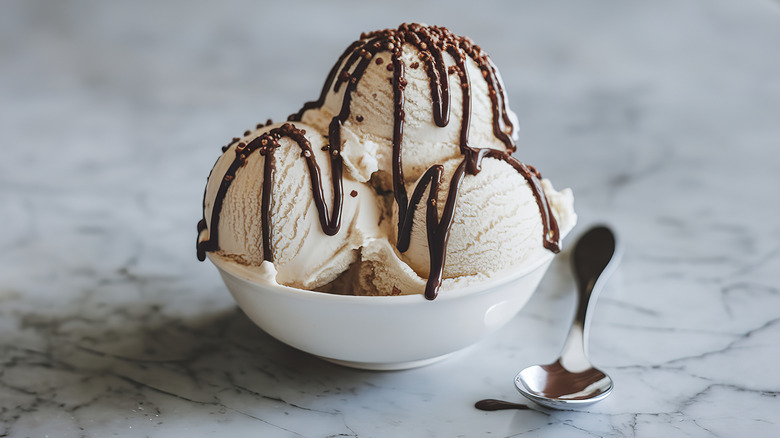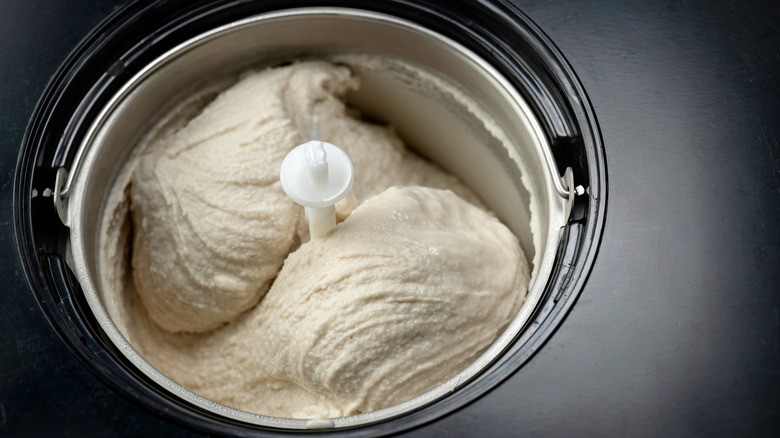Can You Actually Over-Churn Ice Cream?
If you've gone through the process of churning ice cream at home, but when you pull it out of the machine, it's greasy, frosty, and crunchy, that means it's over-churned. While crafting your own ice cream bases can be simple and can give you the chance to make ice cream flavors that you don't see every day, there's one sure-fire pitfall that will prevent your creation from being scoop-shop worthy and it has nothing to do with the recipe. No matter how perfectly your ice cream base has been prepared, it can fall victim to becoming over-churned in the machine.
One common misconception is that your ice cream will be ready for scooping and serving straight out of the machine. If you're waiting for your ice cream's texture to hit this point and just keep spinning it, you're making a mistake. It's key to stop spinning the ice cream when the texture becomes thick and starts to pull away from the bowl. When it's ready, it will look similar to soft serve. While most home ice cream machines take 20-30 minutes to churn the liquid into the proper texture, it then needs to firm up in the freezer for at least four hours but ideally, overnight.
What happens during the churning process?
I'm a trained pastry chef with more than ten years of professional ice cream making and it's taken me years to figure out the science behind freezing up the perfect scoop at home. While a standard time for churning a batch at home is roughly 25 minutes, this spin time can vastly differ depending on everything from the recipe to the ambient temperature of your kitchen. It may feel like you should keep the machine running, but this is when you'll have to learn to trust the process. In addition to keeping your eyes out for the perfect consistency, you can also check the temperature of the mixture. You should aim to stop spinning when the base has reached about 21 degrees, which is when the temperature of roughly half of the water has frozen.
When you spin ice cream in a home machine, the temperature drops in the chamber which causes the water in the recipe to turn to ice. The paddle in the machine that rotates through the chamber helps break up ice crystals as they form, keeping them small and evenly spread throughout the mixture. After you remove the ice cream from the machine and transfer it into a container to place in your freezer, the water continues to freeze and the texture sets up. This is when the transformation will be completed, making the texture firm and scoopable. And if you spun your ice cream for too long and it doesn't have the texture you're after, the good news is that all you need to do is let it melt, give things a whisk and then you can churn the liquid again.

